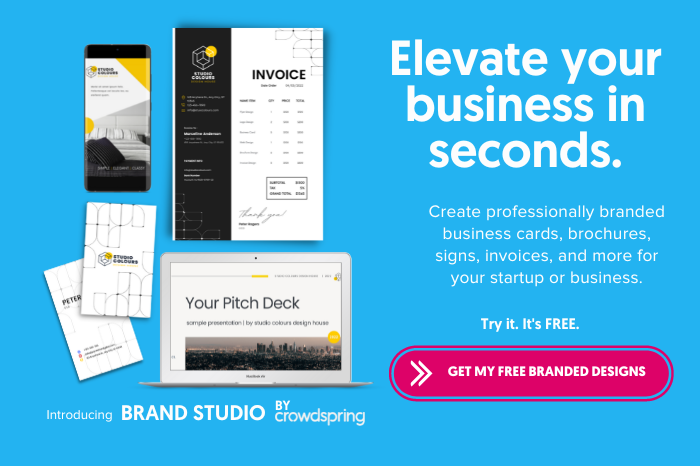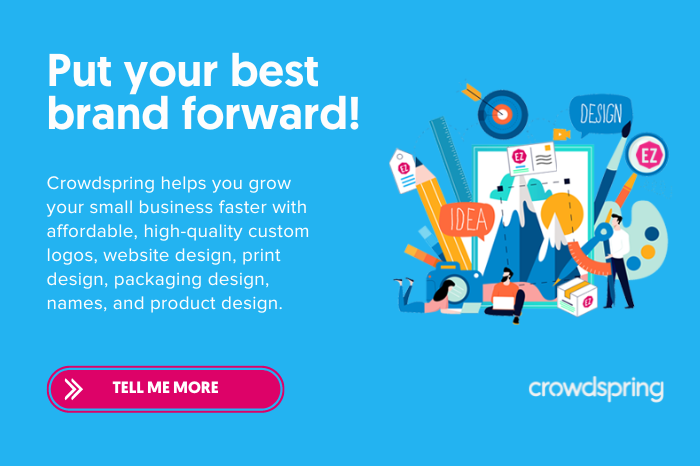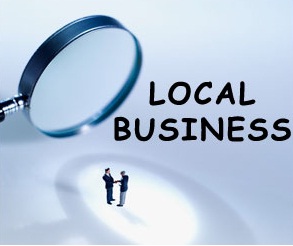
People love a good story. Storytelling is imprinted in our behaviors as individuals and how we interact in society.
Thus, it is not surprising that storytelling is a powerful tool to connect and engage in marketing.
But, whether you are building a start-up or growing an established business, how you tell your brand story matters.
A strong brand messaging strategy helps build your reputation, attract prospective audiences, and help your existing customers feel connected to you.
To develop a strong brand messaging strategy, you need to understand your brand pillars.
What are brand pillars?
Brand pillars are the foundation on which your brand is built. They are a combination of personality and values that define your brand and differentiate it from competitors. Purpose, positioning, personality, perception, and promotion are the main brand pillars.

In this definitive guide to brand pillars, we’ll share everything you need to know about them and how they can help you build trust with your target audience and craft a solid and effective brand strategy.
Definitive Guide to Brand Pillars

The five brand pillars
There are five core brand pillars: purpose, position, personality, perception, and promotion. Let’s look at each brand pillar in detail.
1. Purpose
The purpose pillar takes your strategy right back to your brand’s core. Think of the mission and the vision that brought the company into being.
Why does your brand exist? Why do you get up every day to put in the work? Include what motivates you and how you use that motivation in the service of your customers.
Your company’s purpose is vital because it helps define company culture, attract employees who align with your mission and find the right target audience that connects with your values.
Purpose can be shared in several ways.
You can begin with the founders’ story – was your company an underdog, a young start-up, or did you start your business in a mid-career pivot?
Share the circumstances around the launch of your brand. Or, if you’re already an existing brand, you can share how your original mission has evolved and developed over time.
You can use your website’s “impact” or “mission” page to outline your company’s purpose. And you can likewise highlight your history and values in social media posts.
Remember, transparency and brand authenticity are essential in defining your purpose. Whatever you declare must ring true to your values as a founder or a business owner.
Questions to ask:
- Why does your business exist?
- What do you want to accomplish?
- What drives your brand?
- What problem/s does it solve?
- What value are you offering to your customers, employees, and community?
- What do you want your legacy to be?
- What are you most proud of as an organization?

2. Positioning
Positioning is how you differentiate from competitors and where your brand stands in the market.
When brainstorming positioning, identify your target audience and how your ideal audience differs from your current audience and competitors.
Your brand resides in a very distinct place in the minds of those who experience it, including your customers, investors, and employees.
Positioning helps you describe your unique value proposition in a way that gets people always to choose you.
Is your brand a leading expert in your industry? Is your product the best in your field?
For example, Nike is an industry leader in the sportswear industry. The brand is seen as an authority in fitness, sports, and athletics. This positioning didn’t happen by chance. Nike crafted stories to create this perspective in the minds of consumers.
Amazon is a leader in online shopping and fast delivery. They dominate the online consumer marketplace by positioning themselves as providing the best customer experience with their customized shopping experience, low pricing, and Amazon Prime shipping.
When crafting your positioning, you must understand where your brand currently stands and how your brand must grow or evolve to reach your desired positioning.
Questions to ask:
- Who is our target audience?
- What do your ideal consumers want?
- What are the strengths and limitations of your brand?
- What niche is your brand competing in?
- What is the marketplace like?
- Where are you in that marketplace compared to your competitors?
- How are competitors positioning their brand?
- How are we different from the competition?
- What is your long-term goal?
3. Personality
The personality or identity pillar refers to your brand’s human characteristics, behaviors, emotions, and intellectual features.
You must define what qualities make your brand unique and identifiable to your customers.
That can cover everything in your visual identity – business name, company logo, aesthetics, fonts, color palette, and more- to the more nuanced brand persona, including your tone, voice, or archetype.
It is essential to understand that the personality pillar is your brand’s first impression.
Will your brand’s personality help create an immediate connection and familiarity with customers and prospects? Is your brand’s personality memorable and relatable?
Can people recognize your brand colors, tone of voice, and anything else your brand publishes even before they see your brand name?
Establishing a brand personality earlier is vital because it can be your foundation for a strong and recognizable brand persona.
A strong brand persona will be understood by consumers who haven’t bought your product or those who haven’t heard of your company.
Moreover, a recognizable brand also leads to brand loyalty and being top-of-mind when people need your product or service. Think McDonald’s golden arches – they’re so recognizable that even toddlers can identify the global fast-food giant.
Most importantly, brand personality is essential because people are emotional buyers, and they like building connections with brands.
And because people build emotional connections with people, not products, brand personality helps to humanize your brand.
Personality makes your product more than just an item on a shelf.
Questions to ask:
- What is your point of view?
- What is your brand archetype?
- What is the mood of the brand?
- What tone of voice do you use to communicate?
- What are the keywords you use when communicating?
- What visual elements (colors, fonts) do you use to represent your brand?
- What behaviors define your brand? Are you serious, irreverent, or whimsical?
4. Perception
Jeff Bezos once famously quipped, “Your brand is what other people say about you when you’re not in the room.”
That’s how brand perception works.
Most companies start by defining the characteristics with which they want to associate themselves (internal). Perception can be shaped through strategic and thoughtful branding and imagery, tone, advertising, and reputation management.
But, perception ultimately boils down to your target audience’s interpretation of your company (external).
Knowing what audiences think of you through feedback, customer reviews, and social listening are essential insights in helping identify your weak spots, improve on them, and respond to customer needs.
But remember that your employees are part of your audience. Aligning your internal and external communications supports your company’s integrity and brand perception.
Put differently: how would a company communicate its values to customers and prospects when the people running it fail to embody those values?
For example, if your company promotes an enjoyable work environment, you will attract employees who are loyal and happy to be working for you.
And because they are happy in what they do, they will also bring a positive experience and perception to the customers with whom they interact.
Questions to ask:
- How do your customers perceive your brand? How do they describe you?
- What do they perceive your value to be?
- Is this how you want to be perceived?
- Where do the customer misperceptions stem from?
- How do you change their misperceptions of your brand?
- What do your customers think of your competitors?
5. Promotion
The promotion pillar focuses on the customer’s journey and looks at all the ways and tactics you introduce, entice, engage, and motivate customers to connect with your brand.
More importantly, promotion helps your customers and prospects choose your brand over competitors.
Your communication channels, the customer experiences you provide (online and offline), the touchpoints in the customer journey, and your brand’s visibility are essential aspects to consider in your brand promotion pillar.
The promotion pillar is not only about the where, when, and why. It’s also about how often your target audience sees your brand.
A strong brand promotion strategy, after all, should be able to place your brand in the right place, at the right time, and in the proper context for your customers and prospects.
Don’t confuse promotion with a sales promotion (which uses discounts and giveaways to sell more products). Brand promotion is more about the brand’s long-term goal, not a quick sale.
Questions to ask:
- What is your current brand awareness?
- How are you currently promoting your brand?
- What are your communication channels?
- Where do your customers find you?
- When do your customers need you?
- What experiences do you provide to your customers?
- What makes your customer experience better than others?
- How are customers interacting with you online and offline?
- How do you handle bad experiences?
How to create brand pillars for your brand
Brand pillars are not built in a day. It takes careful thought, introspection, research, and strategic planning.
However, once you understand the basic thought process, you have enough to get you started. Here are best practices to help you craft your brand pillars.
Define and refine
One of the best places to start is inwards. Founders or business owners need to identify and articulate their company’s values.
When you can identify the motives that give your brand purpose, you can then convey your core principles to your customers in a way that relates to them.
You can gain more insight into the values you share with your target market through customer reviews, feedback surveys, and social listening to discover and learn about what your target market needs, wants, and cares about.
This information will help you test and refine your brand purpose – if it resonates with the audience you are trying to reach.
Identify and understand
Next, track and observe how your target audience perceives your brand and how your target audience relates to your brand personality.
You must gather and analyze data that presents the demographic, interests, and purchasing patterns of your core audience.
Data is your best friend in this regard. Dive into your Google Analytics to discover this information.
You can also use social media analytics to observe how your brand is positioned against competitors.
Test and learn
Branding and marketing have become dynamic in the digital age. Even if you have crafted your brand pillars, your job isn’t finished. Brand pillars must evolve as companies, industries, and customers change.
Legendary brands such as Nike, Apple, or McDonald’s don’t dominate the market just through luck alone. They’ve waded through multiple decades, social tides, and generational shifts because they’ve mastered adapting to change.
Conclusion
Brand pillars are the heart and soul of any business. Coming up with a great product or service can only take you so far.
Ultimately, your brand’s message, integrity, personality, and narrative will determine whether you can build a successful and sustainable business.

We regularly update this brand pillars guide. We most recently updated this guide on June 2, 2022.
Interested in other types of businesses or how-to guides? Here are our comprehensive guides:
How to Start a Business: The Complete Step-by-Step Guide to Starting a Business in 2022
How to Write a Business Plan (2022)
Branding: The Definitive Guide for 2022
The Definitive Guide to Successfully Rebranding in 2022
What is Brand Identity? And How to Create a Unique and Memorable One in 2022
The Ultimate Small Business Guide to Brand Equity in 2022
The Definitive Small Business Guide to Brand Pillars in 2022
The Complete Guide on How to Name a Business
Brand Strategy 101: How to Create an Effective Branding Strategy [GUIDE]
The Definitive Content Marketing Guide
Social Media Marketing: The Ultimate Small Business Guide for 2022
Small Business Guide to Lifecycle Email Marketing: How To Grow Your Business Faster
The Ultimate Guide to Using Twitter for Business in 2022
YouTube Marketing: The Complete Small Business Guide 2022
Instagram Marketing: The Ultimate Small Business Guide for 2022
How to Use LinkedIn: The Ultimate Small Business Marketing Guide
The Ultimate Small Business Guide to Marketing on TikTok
SMS Marketing: The Ultimate Small Business Guide [2022]
Public Relations Guide for Small Business (7 Proven PR Tactics)
How to Start a Consulting Business in 2022: The Complete Step-by-Step Guide
How to Start a Real Estate Business in 2022: Complete Step-by-Step Guide
How to Start a Trucking Business in 2022: The Complete Guide
How to Start a Property Management Company
How to Start a Successful Online T-Shirt Business in 2022: The Definitive Guide
How to Start an eCommerce Business: A Step-by-Step Guide To Take Your Business Online (2022)
Nonprofit Branding: Complete Guide to Building a Strong Nonprofit Brand in 2022
How to Start a Cleaning Business in 2022: The Complete Guide
6 Businesses You Can Start For Less Than $1,000
Marketing Psychology: What You Must Know To Supercharge Your Marketing
What is a DBA and How to File One For Your Business
How to Start a Clothing Line or Clothing Brand From Scratch in 2022: The Definitive Guide
How to Start a Brewery Business in 2022: The Complete 9 Step Guide
How to Start a Medical Marijuana Dispensary Business in 2022
How to Start an Etsy Shop: Your Comprehensive, No-Stress Guide to Starting an Etsy Shop in 2022
How to Start a Photography Business in 2022: The Complete Step-by-Step Guide
How to Start a Business in Texas: The Complete Step-by-Step Guide (2022)
The Definitive Guide to Creating a Compelling Visual Brand for Your Restaurant in 2022
Conversion Rate Optimization (CRO) Guide: How to Make Your Website Work Smarter (2022)
Facebook Messenger Chatbot Marketing: The Definitive Guide (2022)
Branding for Food Trucks: The Definitive Guide (2022)








More Stories
9 Easy Ways To Reduce Business Operating Costs For Startups
Shopping ethically still a priority for Australians, despite cost of living concerns
Onclusive Expands US Footprint with Critical Mention